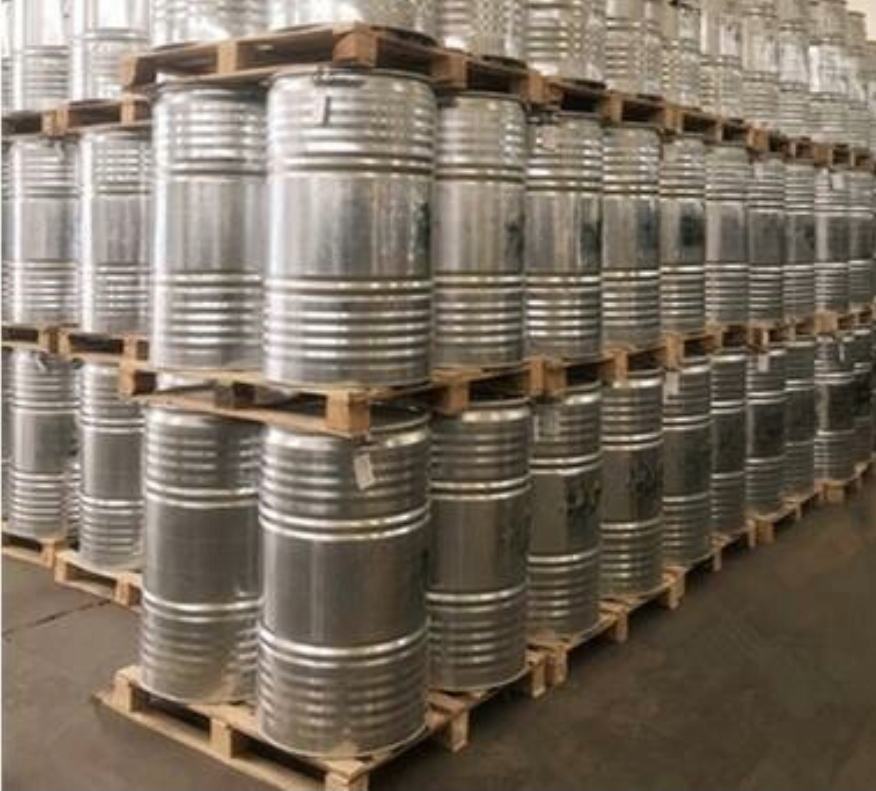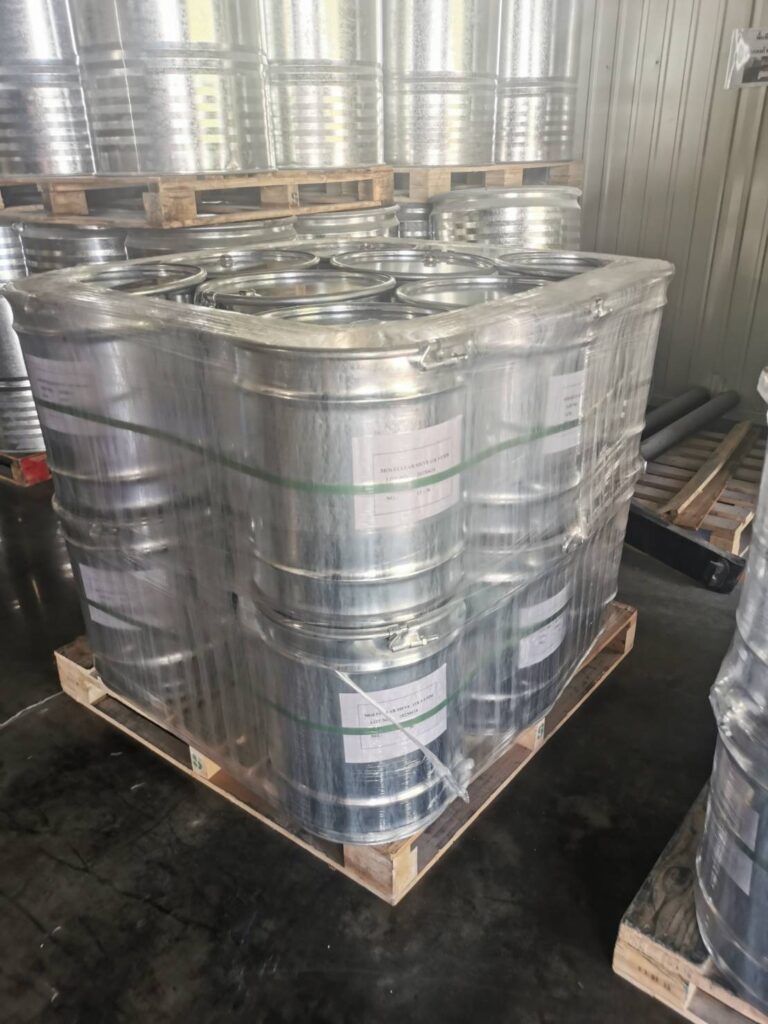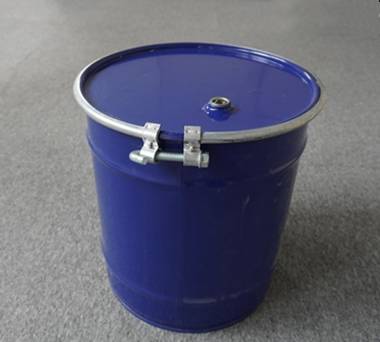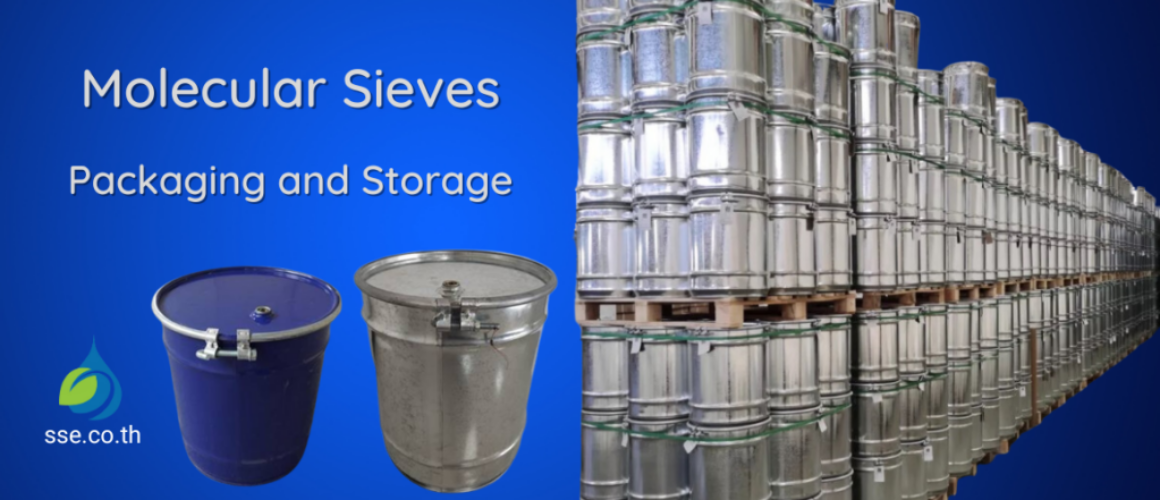Packaging and Storage of Molecular Sieves: Best Practices for Maximum Efficiency


| Aspect | Key Recommendations |
|---|---|
| Airtight Packaging | Always store molecular sieves in sealed drums or vacuum-sealed bags to prevent moisture contamination. |
| Storage Environment | Maintain a low-humidity, temperature-controlled environment to extend the shelf life of molecular sieves. |
| Handling Opened Containers | Reseal or transfer to airtight containers immediately after opening to prevent exposure to ambient air. |
| Regeneration | Molecular sieves can be regenerated through heat treatment to maintain effectiveness after moisture exposure. |
Table Of Contents
“Proper storage of molecular sieves is not just about keeping them dry—it’s about ensuring their long-term usability and efficiency in critical industrial processes.”
Introduction
When it comes to ensuring the maximum efficiency of your molecular sieves, the importance of packaging and storage of molecular sieves cannot be overstated. The packaging and storage of molecular sieves play a key role in preserving their adsorption capabilities, which are essential for a wide range of industrial applications, from petrochemicals to gas processing. By following best practices for packaging and storing molecular sieves, you can protect your investment and ensure they are always ready for peak performance.


In this post, I’ll guide you through everything you need to know about packaging and storing molecular sieves, covering all the common types like 3A, 4A, 5A, and 13X. We’ll discuss how to prevent moisture contamination, best storage conditions, and tips for handling opened containers—helping you get the most out of these vital adsorbents.
Why Proper Packaging and Storage of Molecular Sieves Matter
Molecular sieves are incredibly sensitive to their environment, especially regarding moisture. If left unprotected, they will absorb moisture from the air, which can significantly reduce their effectiveness. Proper storage of molecular sieves is crucial because it ensures that their pore structure remains intact and their adsorption capacity is preserved. The better you store them, the longer they will serve their purpose.
I recall a situation where a client had inadvertently stored their molecular sieves in a high-humidity environment. When it came time to use them, the sieves had absorbed ambient moisture, leading to decreased efficiency in their gas drying process. This could have been avoided by simply using airtight storage containers and maintaining a low-humidity environment.
Packaging Best Practices for Molecular Sieves
Packaging and Storage of Molecular Sieves
| Sieve Type | Packaging Method | Optimal Storage Conditions | Typical Storage Duration |
|---|---|---|---|
| 3A | Vacuum-sealed bags + drums | Dry environment, below 50% humidity | 12-24 months |
| 4A | Sealed steel drums | Temperature controlled, away from acids | 12-24 months |
| 5A | 150kg steel drums | Low humidity, moderate temperature | 12-24 months |
| 13X | Airtight bins + nitrogen | Low temperature, dust-free environment | 18-36 months |
Airtight Containers
One of the simplest yet most effective methods of keeping molecular sieves safe is to use airtight packaging. Molecular sieve packaging is typically done in sealed drum packaging or vacuum-sealed bags to prevent exposure to humidity during storage and transport. The key here is to keep molecular sieves away from open air until they’re ready to be used.
The standard practice is to store these adsorbents in 30kg or 150kg drums, depending on the scale of use. For smaller quantities, vacuum-sealed foil bags are commonly employed. The key is to ensure that the packaging remains undamaged throughout the storage period.
Benefits of Proper Packaging
- Prevents moisture absorption, preserving adsorption capacity.
- Maintains the mechanical strength of the sieves.
- Extends the shelf life of the adsorbent materials.
- Protects from physical damage during transportation.
- Reduces operational costs by minimizing material wastage.
Suitable Packaging Materials
Packaging materials for molecular sieves need to be moisture-proof and durable. Steel drums are commonly used for large quantities, while aluminum-lined plastic bags work well for smaller amounts. Additionally, including a desiccant bag inside the main container can provide added protection against residual moisture—especially useful if your storage environment isn’t perfectly controlled.


Packaging Materials for Molecular Sieves
| Packaging Material | Pros | Cons |
|---|---|---|
| Steel Drums | Durable, airtight, easy for transport | Heavier, more costly for small batches |
| Aluminum Bags | Excellent for moisture control | Limited capacity, not ideal for bulk |
| Plastic Barrels | Lightweight, economical for medium use | Less effective for long-term storage |
| Vacuum Sealing | Prevents even minimal moisture exposure | Needs extra handling during opening |
Storage Environment Best Practices for Molecular Sieves
Dry, Temperature-Controlled Storage
Proper storage of molecular sieves goes beyond simply placing them in a container. Humidity control for adsorbents is absolutely crucial. Always store molecular sieves in a dry place, ideally with relative humidity below 50%. A temperature-controlled room is highly recommended to ensure that sudden temperature changes don’t cause condensation within the container, which could compromise the molecular sieve’s adsorption capacity.
Storing molecular sieves at room temperature is often sufficient, but extreme temperatures should be avoided. Heat can cause molecular sieves to lose structural integrity, while very cold temperatures can make handling difficult, potentially leading to packaging damage.
Avoiding Contamination
Another essential consideration is keeping molecular sieves away from contaminants. I always recommend a dedicated storage area, ideally far from chemicals like acids or solvents that could interact with the molecular sieve. This ensures that the molecular sieves maintain their integrity throughout the storage period.
Recommended Storage Environment
| Parameter | Ideal Condition | Impact if Uncontrolled |
|---|---|---|
| Humidity | Below 50% | Adsorption capacity compromised |
| Temperature | 15-25\u00b0C | Structural integrity may degrade |
| Air Quality | Clean and dust-free | Risk of contamination affecting performance |
Handling Opened Molecular Sieves
Immediate Resealing
Once a container is opened, molecular sieves are immediately exposed to ambient moisture. The best practice is to use the molecular sieves quickly or to reseal the container as soon as possible. If a sealed drum packaging is not an option, transferring the unused molecular sieves to another airtight container can prevent moisture ingress.


Handling Opened Molecular Sieves
| Action | Step-by-Step Instructions | Why Important? |
|---|---|---|
| Opening Container | Open in a low-humidity environment | To minimize exposure to moisture |
| Transfer to Use | Quickly use or transfer to airtight | Limits adsorption from ambient air |
| Resealing | Reseal immediately after use | Maintains effectiveness for future use |
Handling molecular sieves is a bit like working with a dry sponge—once it comes into contact with moisture, it loses its capability to absorb further. By minimizing the time molecular sieves are exposed to air, you can maintain their quality for a longer period.
Steps for Proper Handling of Opened Sieves
- Open Container: Ensure you’re in a low-humidity area.
- Transfer Material: Use quickly or move unused sieves to an airtight container.
- Reseal: Close the container securely as soon as possible.
- Check for Damage: Inspect the integrity of seals after use.
- Storage: Return to a controlled environment for best preservation.
Regeneration Process
If molecular sieves become compromised by moisture, they can still be saved through regeneration. This involves heating the sieves to temperatures between 200°C and 350°C, which releases the adsorbed moisture. Properly regenerated molecular sieves can regain most of their original adsorption capacity. I’ve seen many instances where effective regeneration has saved both time and money for clients in industries that require frequent reuse of these adsorbents.
Packaging Solutions for Different Molecular Sieve Types
3A Molecular Sieve Storage
3A molecular sieve storage is particularly sensitive to moisture since it is commonly used for highly moisture-sensitive applications, like ethanol drying. Packaging should ideally consist of vacuum-sealed bags inside steel drums, providing multiple layers of protection.
3A molecular sieves should also be stored in a temperature-controlled environment to ensure that their pore structure isn’t compromised. Using desiccant bags inside the main container adds an extra layer of security, especially if you’re storing these sieves for an extended period.
4A and 5A Molecular Sieve Packaging
4A molecular sieve packaging is often similar to 3A, with a focus on sealed drum packaging. However, because 4A sieves are used for more general gas purification purposes, they may not require as many layers of protective packaging. Still, keeping them in airtight containers is crucial to prevent pre-adsorption of moisture.
5A molecular sieve storage is typically done in larger bulk packaging, like 150kg steel drums, especially when intended for PSA systems or large-scale gas purification. Their effectiveness depends greatly on keeping the beads dry, so always ensure that opened containers are either quickly resealed or that the contents are transferred into another airtight container.
Tips for Long-Term Storage of Molecular Sieves
Monitoring Humidity Levels
If you plan on long-term storage of molecular sieves, it’s vital to monitor the humidity levels in the storage area. I usually recommend a hygrometer to ensure that the relative humidity stays below 50%. If the humidity level starts to creep up, taking measures like adding extra dehumidifiers or desiccant bags can save the sieves from absorbing ambient moisture.
First In, First Out (FIFO)
A common best practice for all adsorbent materials, including molecular sieves, is to follow the First In, First Out (FIFO) inventory method. This minimizes the time any batch spends in storage, reducing the risk of degradation due to prolonged exposure.
Transport Considerations for Molecular Sieves
Airtight Transport Containers
Transporting molecular sieves also requires care. The key is to use airtight transport containers that can prevent any ingress of moisture. If you’re dealing with bulk molecular sieves, sealed drums are generally used to ensure that the adsorbents reach their destination without any loss in quality.
Transporting molecular sieves without proper sealing can lead to issues, especially when moving them from a humid region to a drier one. Always verify that the transport containers are adequately sealed before transit to avoid unnecessary reactivation or loss of efficiency.
Minimize Transit Time
Minimizing the transit time can also reduce the risk of environmental exposure. In many cases, using a dedicated logistics provider familiar with handling sensitive adsorbent materials like molecular sieves can ensure that the conditions during transport are optimal.
Common Mistakes in Storing Molecular Sieves
- Storing in high-humidity environments.
- Using non-airtight containers after opening.
- Exposure to direct sunlight or heat sources.
- Storing near chemicals that can degrade the adsorbent.
- Long-term storage without regular humidity checks.
Frequently Asked Questions
What is the best way to package molecular sieves?
Molecular sieve packaging is best done in sealed drum packaging or vacuum-sealed bags to prevent moisture contamination during storage and transport.
Why is proper storage of molecular sieves important?
Proper storage of molecular sieves is crucial to maintaining their effectiveness, as exposure to moisture can compromise their adsorption capabilities.
What type of airtight storage containers should be used for molecular sieves?
Airtight storage containers such as steel drums or vacuum-sealed bags are ideal for storing molecular sieves, ensuring they are not exposed to ambient humidity.
How can I control moisture levels when storing molecular sieves?
To control moisture levels, use desiccant bags inside the main container and store molecular sieves in a low-humidity environment, ideally below 50% relative humidity.
How do I handle opened containers of molecular sieves?
Once opened, molecular sieves should be immediately transferred to airtight containers to prevent moisture ingress or resealed securely if possible.
What are the specific packaging requirements for 3A molecular sieve storage?
3A molecular sieves should be stored in vacuum-sealed bags placed inside steel drums to offer multiple layers of protection against moisture contamination.
What is the recommended packaging for 4A molecular sieves?
4A molecular sieve packaging typically involves sealed drum packaging, with emphasis on maintaining an airtight environment to prevent pre-adsorption of moisture.
How can I store 5A molecular sieves for long-term use?
5A molecular sieves should be stored in 150kg steel drums, sealed securely, and kept in a temperature-controlled, low-humidity environment for long-term effectiveness.
What type of packaging is recommended for bulk molecular sieves?
Molecular sieves in bulk packaging are often stored in large sealed drums or vacuum-sealed bags to protect them from environmental humidity during storage and transport.
How should I store zeolite adsorbents for best results?
Zeolite adsorbent storage should involve airtight packaging and maintaining a low-humidity, temperature-controlled environment to preserve their adsorption capacity.
Can molecular sieves be regenerated after moisture exposure?
Yes, molecular sieves can be regenerated through a heat treatment process at temperatures between 200°C and 350°C to remove adsorbed moisture and restore adsorption capacity.
How do I protect molecular sieves from moisture during transport?
Protect molecular sieves from moisture during transport by using airtight containers, sealed drums, or vacuum-sealed bags to prevent exposure to changing environmental conditions.
What is the ideal humidity level for storing molecular sieves?
The ideal humidity level for storing molecular sieves is below 50% relative humidity to prevent moisture from compromising their effectiveness.
What are the best practices for industrial molecular sieve storage?
Industrial molecular sieve storage should involve using airtight containers, storing in a low-humidity environment, and minimizing exposure to air by resealing containers promptly after use.
How do I dry molecular sieves that have been exposed to moisture?
Molecular sieves exposed to moisture can be dried through a regeneration process that involves heating them to the appropriate temperature to release adsorbed water.
How long can molecular sieves be stored effectively?
With proper storage conditions, including low humidity and airtight packaging, molecular sieves can be stored for several years without a significant loss in performance.
What precautions should I take for long-term storage of molecular sieves?
For long-term storage, use airtight packaging, monitor humidity levels with a hygrometer, and follow the First In, First Out (FIFO) inventory method to minimize storage time.
How should molecular sieves be transported to ensure quality?
During transport, molecular sieves should be kept in sealed drum packaging or vacuum-sealed bags, and transport time should be minimized to avoid prolonged exposure to varying humidity levels.
Are there specific handling guidelines for opened molecular sieves?
Yes, handling opened molecular sieves requires resealing them as quickly as possible or transferring them to another airtight container to protect them from moisture.
What packaging solutions are available for vacuum-sealed bags of molecular sieves?
Vacuum-sealed bags are a common packaging solution for small quantities of molecular sieves, providing excellent moisture protection and allowing for easy handling and storage.
“Packaging plays a crucial role in the effectiveness of molecular sieves, ensuring that when it’s time for them to perform, they are in optimal condition for peak efficiency.”
Conclusion
Effective packaging and storage of molecular sieves are not just about keeping them in a container—it involves a thoughtful approach to preserving their structural integrity and adsorption capabilities. By following these guidelines—using airtight containers, maintaining a low-humidity environment, and properly handling opened containers—you can ensure that your molecular sieves stay ready for action, providing reliable performance when you need them most.
If you’re interested in exploring the different types of molecular sieves and understanding their specific storage requirements, be sure to check out our full range of Molecular Sieve products. You can also read Adsorption Solutions with Molecular Sieves: Targeting VOCs, Ammonia, and Sulfur Compounds, or our detailed article on Molecular Sieves 3A: Features, Applications, and Industry Insights for more specific details about handling different types of adsorbents.
For a comprehensive understanding of molecular sieves and their applications, head over to our cornerstone page: A Comprehensive Guide to Molecular Sieve. Additionally, for scientific insights on molecular sieves, feel free to explore this external resource.
Would you like more examples of packaging issues or a focus on a particular type of molecular sieve for different industries?
ขอบคุณที่ใช้เวลาอ่านบทความของเราเกี่ยวกับการป้องกันความชื้น ทางเราหวังว่าท่านจะได้รับข้อมูลที่มีคุณค่าและเป็นประโยชน์ ทางเรายินดีให้บริการการปรึกษาฟรีเพื่อพูดคุยเกี่ยวกับความต้องการของท่านและให้คำแนะนำเกี่ยวกับวิธีการป้องกันความชื้นที่กำหนดเฉพาะสำหรับคุณ โปรดติดต่อเราที่ 0858124188 เพื่อนัดหมายการปรึกษาหรือเยี่ยมชมร้านค้าของเราเพื่อค้นหาผลิตภัณฑ์ที่ช่วยป้องกันสินค้าของคุณจากความเสียหายจากความชื้น ทางเราหวังว่าจะได้รับข่าวสารจากท่านเร็วๆนี้
